Zetta Elliott's Blog, page 47
April 13, 2015
caged kids
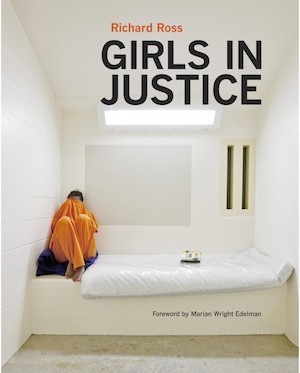 I have so many things to say but I need to think some more so this post will be brief. I flew out to San Francisco on Thursday and guzzled about three liters of water during the six-hour flight to ward off a cough attack. Today I’m hardly coughing at all, but over the weekend I just couldn’t stop. I’m not really sick—it’s my asthma that makes this cough linger, and it’s exhausting but the trip was still totally worthwhile. I stayed with Laura Atkins in her beautiful new home and we got to catch up with Janine Macbeth and Maya Gonzalez on Friday at the ACL institute. As soon as we arrived we were greeted and warmly welcomed by Meredith Steiner; Amy Cheney found me in the crowd and I was thrilled to spend Saturday morning with her at the Alameda County Juvenile Justice Center. So far this is the main connection I’ve made between the conference on Friday and my time at the detention center: kids should NOT be caged but that’s inevitably what happens when you put profits before people. The ACL institute was all about “going there” and unlike other diversity events, there was a workshop on white privilege that broke down some key terms (like the difference between equality and equity). I’m not sure PoC needed to be present for that lengthy workshop, but we definitely needed someone like Maya in the morning session to point out that the panel on privilege in publishing was continuing to uphold normative whiteness. I personally am not concerned about getting white kids to read my books. It’s great when they do, but my priority is getting books into the hands of kids of color. And one of my main objectives at Rosetta Press is to publish affordable, inclusive books so that low-income families can build a home library for their kids. But once again on the morning panel we heard the claim that diverse books have to be profitable because at the end of the day, the publishing industry is a business. Jacqueline Woodson made this remark and then added that she and her partner are careful about what their kids consume; over Xmas they only saw Selma and Annie, and Jackie bought 10 copies of The Crossover to share with friends. I’m reading it right now and will be sending a copy to my young cousin, but I can’t afford to buy ten hardcover copies of every diverse book. And even if The Crossover didn’t win the Newbery and didn’t land on the bestseller list, that book would STILL deserve to be in print and in the hands of young readers. During the panel Laura gave a shout out to indie authors like me and alternative presses like Maya’s Reflection Press and Janine’s Blood Orange Press; our success in telling different kinds of stories gives her hope, and I’m glad. But it’s troubling to me that so many people are still buying into the idea that profitability matters most. After the panel I was having a lively conversation with some women of color about why a capitalist publishing model is so problematic when a white woman librarian politely interrupted us to ask Janine if she could please publish some books about Samoans for her high school students. Her request helped me make my case. A book about Samoan teens may not wind up on the bestseller list and make a huge profit for some publisher. But the NEED for those books is real, and those Samoan kids deserve to see their lives reflected on the pages of the books they read. And yes, kids of other racial backgrounds could also benefit from reading those books. But if publishers continue to think that books about kids of color “don’t sell,” and if they produce hardcover books that are prohibitively expensive, and if they have lily-white marketing departments that don’t even TRY to market books to PoC, then nothing will change. During my visit to the detention center I was telling a group of teenage girls about The Last Bunny in Brooklyn. “It’s an allegory,” I told them, “a story that has a hidden meaning.” And one girl turned to me and said, “Like subtext?” And I wanted to say, “You don’t belong here.” But then none of them belongs in a windowless cell. The detention center has incredible art in their administrative offices—art produced by the incarcerated youth. There were yoga mats on the floor in the girls’ unit because instructors come in to teach them yoga. So what if we provided art classes and yoga to ALL kids from pre-K through to college? What if every school and community and home had a library filled with diverse books? What if every school received the same funding and had teachers who aren’t paid according to their students’ test scores? We can create communities that put people first. We can ensure that EVERY child has books that serve as a mirror. But we have to divest from the profit mentality that turns everything into a commodity. For-profit prisons have helped to drive mass incarceration, which has devastated low-income communities of color. We don’t need for-profit publishers to “save” our kids. We can serve them more effectively ourselves with a community-based publishing model.
I have so many things to say but I need to think some more so this post will be brief. I flew out to San Francisco on Thursday and guzzled about three liters of water during the six-hour flight to ward off a cough attack. Today I’m hardly coughing at all, but over the weekend I just couldn’t stop. I’m not really sick—it’s my asthma that makes this cough linger, and it’s exhausting but the trip was still totally worthwhile. I stayed with Laura Atkins in her beautiful new home and we got to catch up with Janine Macbeth and Maya Gonzalez on Friday at the ACL institute. As soon as we arrived we were greeted and warmly welcomed by Meredith Steiner; Amy Cheney found me in the crowd and I was thrilled to spend Saturday morning with her at the Alameda County Juvenile Justice Center. So far this is the main connection I’ve made between the conference on Friday and my time at the detention center: kids should NOT be caged but that’s inevitably what happens when you put profits before people. The ACL institute was all about “going there” and unlike other diversity events, there was a workshop on white privilege that broke down some key terms (like the difference between equality and equity). I’m not sure PoC needed to be present for that lengthy workshop, but we definitely needed someone like Maya in the morning session to point out that the panel on privilege in publishing was continuing to uphold normative whiteness. I personally am not concerned about getting white kids to read my books. It’s great when they do, but my priority is getting books into the hands of kids of color. And one of my main objectives at Rosetta Press is to publish affordable, inclusive books so that low-income families can build a home library for their kids. But once again on the morning panel we heard the claim that diverse books have to be profitable because at the end of the day, the publishing industry is a business. Jacqueline Woodson made this remark and then added that she and her partner are careful about what their kids consume; over Xmas they only saw Selma and Annie, and Jackie bought 10 copies of The Crossover to share with friends. I’m reading it right now and will be sending a copy to my young cousin, but I can’t afford to buy ten hardcover copies of every diverse book. And even if The Crossover didn’t win the Newbery and didn’t land on the bestseller list, that book would STILL deserve to be in print and in the hands of young readers. During the panel Laura gave a shout out to indie authors like me and alternative presses like Maya’s Reflection Press and Janine’s Blood Orange Press; our success in telling different kinds of stories gives her hope, and I’m glad. But it’s troubling to me that so many people are still buying into the idea that profitability matters most. After the panel I was having a lively conversation with some women of color about why a capitalist publishing model is so problematic when a white woman librarian politely interrupted us to ask Janine if she could please publish some books about Samoans for her high school students. Her request helped me make my case. A book about Samoan teens may not wind up on the bestseller list and make a huge profit for some publisher. But the NEED for those books is real, and those Samoan kids deserve to see their lives reflected on the pages of the books they read. And yes, kids of other racial backgrounds could also benefit from reading those books. But if publishers continue to think that books about kids of color “don’t sell,” and if they produce hardcover books that are prohibitively expensive, and if they have lily-white marketing departments that don’t even TRY to market books to PoC, then nothing will change. During my visit to the detention center I was telling a group of teenage girls about The Last Bunny in Brooklyn. “It’s an allegory,” I told them, “a story that has a hidden meaning.” And one girl turned to me and said, “Like subtext?” And I wanted to say, “You don’t belong here.” But then none of them belongs in a windowless cell. The detention center has incredible art in their administrative offices—art produced by the incarcerated youth. There were yoga mats on the floor in the girls’ unit because instructors come in to teach them yoga. So what if we provided art classes and yoga to ALL kids from pre-K through to college? What if every school and community and home had a library filled with diverse books? What if every school received the same funding and had teachers who aren’t paid according to their students’ test scores? We can create communities that put people first. We can ensure that EVERY child has books that serve as a mirror. But we have to divest from the profit mentality that turns everything into a commodity. For-profit prisons have helped to drive mass incarceration, which has devastated low-income communities of color. We don’t need for-profit publishers to “save” our kids. We can serve them more effectively ourselves with a community-based publishing model.
It was such a treat to gather with like-minded individuals while I was on the west coast. I’d be lost without the support and guidance of my fellow “rad women.” When I got back to Brooklyn on Sunday, Amy connected me with a librarian at a juvenile detention center here in NYC. Hopefully I’ll be able to visit this spring and share my books. One girl in Alameda was removed from our small group but later told me she liked my book about the bird—I thought she meant Bird but then she talked about the kids being underground, and I realized she was talking about Ship of Souls. I’m so glad librarians like Amy are making sure that incarcerated youth have diverse books. ALL our kids matter; no child is disposable.

me, Laura Atkins, Maya Gonzalez, & Janine Macbeth
April 8, 2015
present…tense
 The magnolia trees are already in bloom in DC. It wasn’t sunny but it was balmy, so I felt like a typical New Yorker in my black coat and black fleece-lined tights (it’s only in the 40s here in BK). I reminded myself to be present and soon got over my out-of-place feeling as my gracious host (and Bee Me Bookshelf founder) Nina Candia drove me around DC. If I ever do leave Brooklyn, I just might head to DC. Not for the fried chicken and donuts, but for the beautiful historic neighborhoods, the architecture, the many galleries and museums that are FREE. Nina took me to the Phillips Collection where we saw Jacob Lawrence’s Struggle series before gathering up her two students who spent the morning writing poetry inspired by the art. We grabbed some Southern fare for lunch and then headed across the river and into Virginia. Madeira is a private school for girls, only some of whom are boarders. Nina kindly invited me to speak to the eleven students in her Black Women Writers class and we wrapped up with a reading from A Wish After Midnight. As soon as class ended, one student rushed back to her dorm and got a comic book she felt I’d appreciate: The Wicked + Divine. I had some time on my own and so perused it in the library—I wonder why comics folks keep trying to suck me in when I don’t read comics and don’t cosplay, but I have to admit they ARE some of the most creative writers out there! In exchange for her generous gift, I gave Barack a copy of The Deep. The young women in the class were very quiet—a big change from my boisterous students in Brooklyn—but I hope I planted a few seeds. Came back to Brooklyn with a migraine and feel very stressed today but I’m thinking of those magnolias and know they’ll soon be blooming here, too. The trick is being present in this moment instead of dwelling on the past or freaking out about the future. I’m still coughing and now my throat is super sore, but I’m looking forward to Friday’s diversity conference in San Francisco. And I’m really looking forward to meeting radical librarian Amy Cheney and the young women she serves at the Alameda County Juvenile Hall. Scattering seeds far and wide…
The magnolia trees are already in bloom in DC. It wasn’t sunny but it was balmy, so I felt like a typical New Yorker in my black coat and black fleece-lined tights (it’s only in the 40s here in BK). I reminded myself to be present and soon got over my out-of-place feeling as my gracious host (and Bee Me Bookshelf founder) Nina Candia drove me around DC. If I ever do leave Brooklyn, I just might head to DC. Not for the fried chicken and donuts, but for the beautiful historic neighborhoods, the architecture, the many galleries and museums that are FREE. Nina took me to the Phillips Collection where we saw Jacob Lawrence’s Struggle series before gathering up her two students who spent the morning writing poetry inspired by the art. We grabbed some Southern fare for lunch and then headed across the river and into Virginia. Madeira is a private school for girls, only some of whom are boarders. Nina kindly invited me to speak to the eleven students in her Black Women Writers class and we wrapped up with a reading from A Wish After Midnight. As soon as class ended, one student rushed back to her dorm and got a comic book she felt I’d appreciate: The Wicked + Divine. I had some time on my own and so perused it in the library—I wonder why comics folks keep trying to suck me in when I don’t read comics and don’t cosplay, but I have to admit they ARE some of the most creative writers out there! In exchange for her generous gift, I gave Barack a copy of The Deep. The young women in the class were very quiet—a big change from my boisterous students in Brooklyn—but I hope I planted a few seeds. Came back to Brooklyn with a migraine and feel very stressed today but I’m thinking of those magnolias and know they’ll soon be blooming here, too. The trick is being present in this moment instead of dwelling on the past or freaking out about the future. I’m still coughing and now my throat is super sore, but I’m looking forward to Friday’s diversity conference in San Francisco. And I’m really looking forward to meeting radical librarian Amy Cheney and the young women she serves at the Alameda County Juvenile Hall. Scattering seeds far and wide…
April 2, 2015
flex time
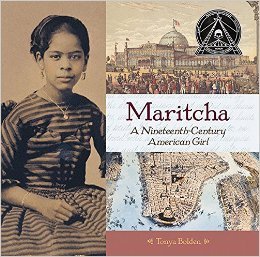 I’m less than thrilled about having yet another cold, but I’m grateful that I slept through the night and woke with enough energy to get 13K steps in by noon. It feels like spring today and there are more crocuses than I can count along the sidewalk that leads to the library. I walk this strip of Flatbush Avenue quite often and each time I marvel at the determination of crocuses—whether it’s pouring rain or threatening to snow, these tiny, purple flowers persist—INSIST upon their right to bloom NOW. I’m trying to be more flexible with my historical fiction class at Brooklyn Prospect Charter School. On Tuesday I started thinking about what it would take to develop an “Africans in the Americas” course for middle grade students. I wanted to show the Middle Passage scene from Amistad last week but had technical issues; this time around two of my students tried to fix the sound but we just couldn’t make it work. I was ready to give up but the students assured me they were fine (“There are subtitles!”), so we watched the gripping scene and had a rather abbreviated conversation after they wrote on their own for a few minutes. I’m realizing that I need to do more and less; I need to provide more structured writing time, more time for sharing, more time for processing all this information. And at the same time I need to accept that this is not a 16-week college course; I only have 4 weeks and so I can’t cover all topics in depth in the limited time we have together. Last week we talked about “home” and whether you can insist that you belong in a place where you’re not wanted; we discussed the colonization movement and whether African Americans belong in Africa or the US. This week we talked about the Black Lives Matter movement and I touched on some of the riots that took place in NYC (1834 & 1863) and the city of Brooklyn (1862) around the time that Weeksville was founded (1838). We talked about war but didn’t get to the conditions of peace…so next week we’ll slow down. At the library today I picked up another copy of Maritcha: A Nineteenth-Century American Girl by Tonya Bolden; I bought 3 copies last week and scanned the pages covering the NYC Draft Riots so we’d have enough copies to go around. We read that section aloud together, pausing to create a cast of characters. Hopefully over break the students will start a diary entry from someone participating in the riots—African Americans who fled in terror, white police officers brought to tears by the chaos, a kind German neighbor who was beaten days later for helping Blacks escape the mob. I had a smaller group this week, which I expected, but these middle graders seem committed. I dropped off copies of A Wish After Midnight for all of them this morning so in our next two classes I can talk about how I took actual historical events/people and turned them into a novel…
I’m less than thrilled about having yet another cold, but I’m grateful that I slept through the night and woke with enough energy to get 13K steps in by noon. It feels like spring today and there are more crocuses than I can count along the sidewalk that leads to the library. I walk this strip of Flatbush Avenue quite often and each time I marvel at the determination of crocuses—whether it’s pouring rain or threatening to snow, these tiny, purple flowers persist—INSIST upon their right to bloom NOW. I’m trying to be more flexible with my historical fiction class at Brooklyn Prospect Charter School. On Tuesday I started thinking about what it would take to develop an “Africans in the Americas” course for middle grade students. I wanted to show the Middle Passage scene from Amistad last week but had technical issues; this time around two of my students tried to fix the sound but we just couldn’t make it work. I was ready to give up but the students assured me they were fine (“There are subtitles!”), so we watched the gripping scene and had a rather abbreviated conversation after they wrote on their own for a few minutes. I’m realizing that I need to do more and less; I need to provide more structured writing time, more time for sharing, more time for processing all this information. And at the same time I need to accept that this is not a 16-week college course; I only have 4 weeks and so I can’t cover all topics in depth in the limited time we have together. Last week we talked about “home” and whether you can insist that you belong in a place where you’re not wanted; we discussed the colonization movement and whether African Americans belong in Africa or the US. This week we talked about the Black Lives Matter movement and I touched on some of the riots that took place in NYC (1834 & 1863) and the city of Brooklyn (1862) around the time that Weeksville was founded (1838). We talked about war but didn’t get to the conditions of peace…so next week we’ll slow down. At the library today I picked up another copy of Maritcha: A Nineteenth-Century American Girl by Tonya Bolden; I bought 3 copies last week and scanned the pages covering the NYC Draft Riots so we’d have enough copies to go around. We read that section aloud together, pausing to create a cast of characters. Hopefully over break the students will start a diary entry from someone participating in the riots—African Americans who fled in terror, white police officers brought to tears by the chaos, a kind German neighbor who was beaten days later for helping Blacks escape the mob. I had a smaller group this week, which I expected, but these middle graders seem committed. I dropped off copies of A Wish After Midnight for all of them this morning so in our next two classes I can talk about how I took actual historical events/people and turned them into a novel…
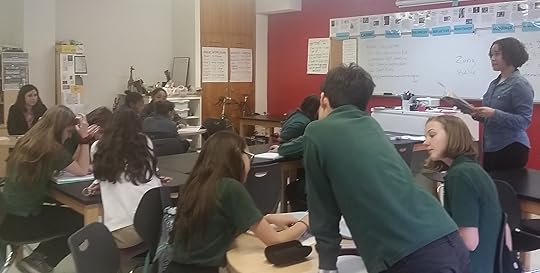
photo by BPCS librarian Leslie Gallager
![Pageflex Persona [document: PRS0000038_00049]](https://i.gr-assets.com/images/S/compressed.photo.goodreads.com/hostedimages/1428034279i/14353412.jpg) I was thrilled to learn today that one of my self-published titles, Room in My Heart, has been included in the Bank Street College of Education Best Children’s Books of the Year, 2015 Edition. I can still remember my father throwing the handmade book aside when I first wrote the story back in 2000 or 2001. It’s about a girl who finds it hard to adjust when her divorced father starts dating a new woman. The father in the book is nothing like my father; he brought plenty of women into our lives but offered no reassurance that our place in his heart was secure. The first time I defied my father was when I was 8 or 9; my sister and I arrived for our weekend visit and found another woman and her two daughters living in my father’s house. Things quickly went from bad to worse and I called my mother to pick us up early. Now that I think of it, my father started calling me a “troublemaker” from that point on. Writing Room in My Heart was therapeutic for me, even if it enraged my father. I tell kids that my writing is guided by the principle of sankofa: there is no shame in going back to retrieve something of value you left behind. In some ways I’m still recovering from my parents’ divorce but I’m glad this story resonates with others, and I hope it can serve as a guide for divorced parents who are bringing new people into their kids’ lives.
I was thrilled to learn today that one of my self-published titles, Room in My Heart, has been included in the Bank Street College of Education Best Children’s Books of the Year, 2015 Edition. I can still remember my father throwing the handmade book aside when I first wrote the story back in 2000 or 2001. It’s about a girl who finds it hard to adjust when her divorced father starts dating a new woman. The father in the book is nothing like my father; he brought plenty of women into our lives but offered no reassurance that our place in his heart was secure. The first time I defied my father was when I was 8 or 9; my sister and I arrived for our weekend visit and found another woman and her two daughters living in my father’s house. Things quickly went from bad to worse and I called my mother to pick us up early. Now that I think of it, my father started calling me a “troublemaker” from that point on. Writing Room in My Heart was therapeutic for me, even if it enraged my father. I tell kids that my writing is guided by the principle of sankofa: there is no shame in going back to retrieve something of value you left behind. In some ways I’m still recovering from my parents’ divorce but I’m glad this story resonates with others, and I hope it can serve as a guide for divorced parents who are bringing new people into their kids’ lives.
March 29, 2015
A Woman’s Place Is in the Home
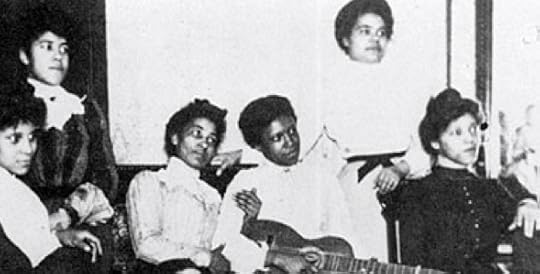
Women of Weeksville circa 1900
“A woman’s place is in the home.” I am a homebody. “Home is where the heart is.” Brooklyn is my heart.
On April 18 I will host a salon at Weeksville Heritage Center, inviting women artists, intellectuals, and activists to gather in the living room of the historic 1930s house. Our topic of conversation: “living room.” In her essay on Weeksville, Sharifa Rhodes-Pitts describes the historic 19th-century African American community as “a room without an exit” where “we could huddle…and protect each other and comfort each other and tell stories.” This salon will ask guests to do the same while reflecting upon “the value of rootedness in a time when its lived reality is eroding.” As gentrification continues to transform Brooklyn, police brutality rages unchecked, and transwomen of color continue to die with little or no media attention, where do we find room to breathe—to live—to thrive?
In her 1987 poem “Moving Towards Home,” Jordan empathizes with the Palestinian people as she envisions a community safe from the forces of extermination:
I need to speak about living room
where the talk will take place in my language
I need to speak about living room
where my children will grow without horror
I need to speak about living room where the men
of my family between the ages of six and sixty-five
are not
marched into a roundup that leads to the grave
I need to talk about living room
where I can sit without grief without wailing aloud
for my loved ones
. . . . . . . . . . . . . . . . . . . . . . . . . . . . . . . . . . . . . . . .
I need to talk about living room
because I need to talk about home
WE need to talk about home. This event is for invited guests only but we plan to take portraits of everyone in attendance. I have no doubt this group of women will be as brilliant and beautiful as the sisters pictured below!
March 23, 2015
at ease
 Where do you feel most at ease? I miss being in the classroom because when I’m teaching, I feel like my best version of myself. I love talking to kids about my books, and this visit to BCS (pictured above) was fantastic—plus they sent me an awesome thank-you letter. But presenting on my books is different than designing a lesson on material that’s not mine. Today I had my first class with the amazing middle grade students at Brooklyn Prospect Charter School. So many hands in the air! And their signals—I LOVE the hand signals they make whenever they agree or disagree with a classmate. No one’s talking over anyone else, there’s no arguing—it’s so efficient! And the students were thoughtful and earnest as we talked about home, humanity, and history…it’s very different leading a discussion with preteens rather than (young) adults, but still satisfying to see students so engaged. I intend to use this same lesson plan with my adult class, though I’m getting worried about enrollment. I need to reach out to some public libraries and churches this week. I really want the class to be intergenerational. In my experience, having elders in the class is always a plus—they teach as much as they learn…
Where do you feel most at ease? I miss being in the classroom because when I’m teaching, I feel like my best version of myself. I love talking to kids about my books, and this visit to BCS (pictured above) was fantastic—plus they sent me an awesome thank-you letter. But presenting on my books is different than designing a lesson on material that’s not mine. Today I had my first class with the amazing middle grade students at Brooklyn Prospect Charter School. So many hands in the air! And their signals—I LOVE the hand signals they make whenever they agree or disagree with a classmate. No one’s talking over anyone else, there’s no arguing—it’s so efficient! And the students were thoughtful and earnest as we talked about home, humanity, and history…it’s very different leading a discussion with preteens rather than (young) adults, but still satisfying to see students so engaged. I intend to use this same lesson plan with my adult class, though I’m getting worried about enrollment. I need to reach out to some public libraries and churches this week. I really want the class to be intergenerational. In my experience, having elders in the class is always a plus—they teach as much as they learn…
March 18, 2015
out of the blue
Dear Zetta,
I am happy to inform you that your article, “The Trouble with Magic: Conjuring the Past in New York City Parks.” which appeared in Jeunesse 5.2 (Winter 2013), has won the ChLA Article Award! Your official letter will be in the mail but I wanted to say congratulations and hope that you will be able to join us at the conference in Richmond to receive your award. The committee thoroughly enjoyed reading your article.
All the best,
Dr. Tammy L. Mielke
Chair, Article Award Committee
I was stunned—and immediately emailed the Chair to make sure it wasn’t a mistake. My ChLA membership has lapsed and I wasn’t sure if I’d been nominated by a friend. But it turns out the committee simply reads all the articles on children’s literature that they can find, and my essay grabbed their attention. I nearly trashed that essay after being told by two white male editors that it didn’t match the “tone” of other contributors to their anthology—this after they practically begged me to submit an essay. I suspected they realized at the last minute that they had no scholars of color in their book…anyway. I withdrew my essay and left it on my hard drive for a year before submitting it to Jeunesse —a Canadian journal (!!!)—where it was appreciated and embraced. If you’d like to read my Jeunesse article, let me know and I’ll email you a PDF. Here’s the abstract:
This paper will examine the use of New York City parks as magical sites of discovery and recovery in speculative fiction for young readers. According to Terence Young, the nineteenth-century rationale for urban parks was that they would promote “public health, prosperity, social coherence, and democratic equality;” although city park designers were initially concerned with serving men, they gradually incorporated the perceived needs of women, adolescents, and children. Young further contends that urban park design, with its vision of “a universal sense of nature,” eventually gave way to a modernizing process of “spatial segmentation and specialization;” park designers rejected the need for “generic spaces linked by a composed repetition of earth, water, and the same plant species throughout,” and opted instead for greater variation in order to accentuate specific locations within the park, which were designed to serve specific groups.
It could be argued that speculative fiction for young readers has gone through a similar process of modernization, shifting from “universal” and “generic” narratives with repetitive features (witches, wizards, werewolves, etc. derived from Western European folklore) to a sort of “specialization” that emphasizes the particular cultural practices and histories of the racially diverse urban population. In her thirty novels, Ruth Chew use city spaces like the Brooklyn Botanic Garden (Summer Magic, 1977) and Prospect Park (The Hidden Cave, 1973) to engage young readers in the magical adventures of white, middle-class children. My own speculative novels (A Wish After Midnight and Ship of Souls) utilize these exact same sites to reveal the complexity and ethnic diversity of urban youth while conjuring the suppressed history of free and enslaved blacks in New York City. Urban parks hold specific significance for African Americans: the construction of Central Park in the 1850s led to the destruction of Seneca Village, a settlement of predominantly black landowners. Yet city parks can also be sites of preservation: the discovery of human remains in lower Manhattan in 1991 culminated in the designation of the African Burial Ground as a National Park Service site, and the Weeksville Cultural Center is currently undergoing a massive city- and state-funded renovation. Urban parks function as sites of tradition and innovation, and thus are central to my “Afro-urban” project, which seeks to represent the various ruptures and responses that shape black history and identity.
Terrence Young, “Modern Urban Parks,” Geographical Review, Vol. 85, No. 4, Thematic
Issue: American Urban Geography (Oct., 1995), pp. 535-551.
I’ll have to see if I can find a way to get to Richmond in June; right now I’m supposed to spend June in the UK doing research for the CAAR conference, but plans change. I’ll be attending the ACL conference in April and can’t wait to break bread with Laura Atkins, Janine Macbeth, and Maya Gonzalez! Time to plot revolution…
March 16, 2015
fragile no more
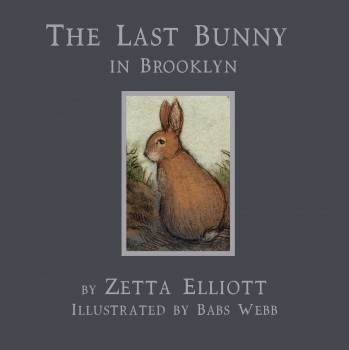 In 2011 I was asked to write an essay for School Library Journal (“A Storied Past“). This month I’ve been given another chance to reflect on my writing life, and this time the focus is on community-based publishing. Here’s a taste:
In 2011 I was asked to write an essay for School Library Journal (“A Storied Past“). This month I’ve been given another chance to reflect on my writing life, and this time the focus is on community-based publishing. Here’s a taste:
I know better than to turn to the publishing industry when I seek justice for “my children:” Trayvon, Renisha, Jordan, Islan, Ramarley, Aiyana, and Tamir. I know not to hope that industry gatekeepers will rush to publish books for the children of Eric Garner as they struggle to make sense of the murder of their father at the hands of the New York Police Department. But I also know that children’s literature can help to counter the racially biased thinking that insists Michael Brown was “no angel” but rather “a demon” to be feared and destroyed. I believe there’s a direct link between the misrepresentation of Black youth as inherently criminal and the justification given by those who so brazenly take their lives.
The publishing industry can’t solve this problem single-handedly, but the erasure of Black youth from children’s literature nonetheless functions as a kind of “symbolic annihilation.” Despite the fact that the majority of primary school children in the U.S. are now kids of color, the publishing industry continues to produce books that overwhelmingly feature white children only. The message is clear: the lives of kids of color don’t matter.
I’m grateful for the opportunity to share my vision—which is shared by others in my community. Right now the west coast is calling my name; my radical women friends will be out in force at this event held by the Association of Children’s Librarians of Northern California (ACLNC) Institute—All Due Respect: A Dialogue about Diversity, Equity, and Creating Safe Spaces for All Youth (you can register here, and see the flyer here). Laura Atkins (who contributed to my SLJ article) will be speaking on a panel chaired by Nina Lindsay who just wrote an important article in SLJ on diversity and children’s publishing. Her co-panelists? Jacqueline Woodson, Malinda Lo, and Aya de Leon. I wanna go!
Tonight I’m speaking to Prof. Michelle Martin’s graduate students at the University of South Carolina; tomorrow morning I’m speaking with Kori Miller. Wednesday is my first day at Weeksville Heritage Center. And THEN the novel-writing begins…
March 13, 2015
Weeksville photo shoot
My talented photographer friend, Valerie Caesar, has taken some fantastic photographs in the 1930s historic house at Weeksville Heritage Center. Out of 130 (!!!) I’ve narrowed it down to 20. Which one do you think best represents me as writer-in-residence?

1.
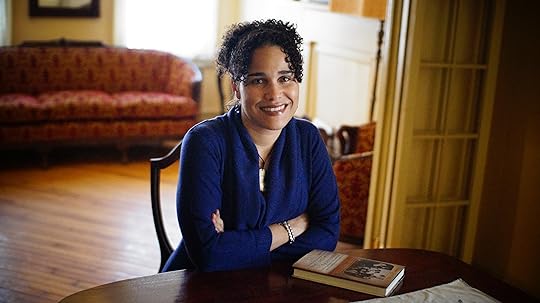
2.
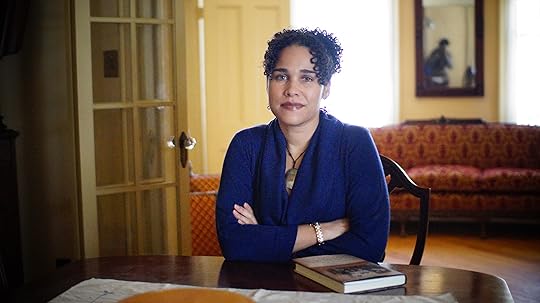
3.
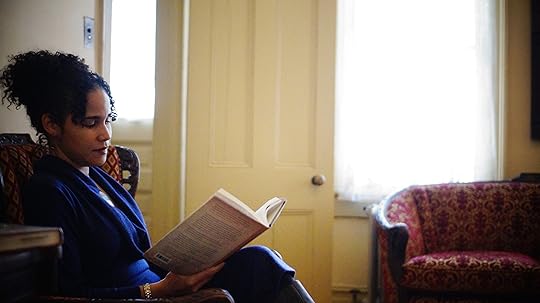
4.
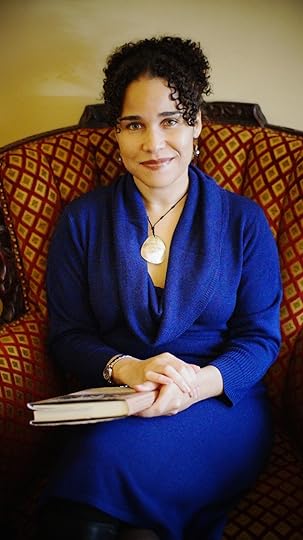
5.
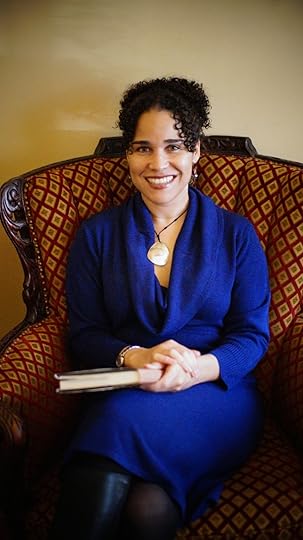
6.

7.
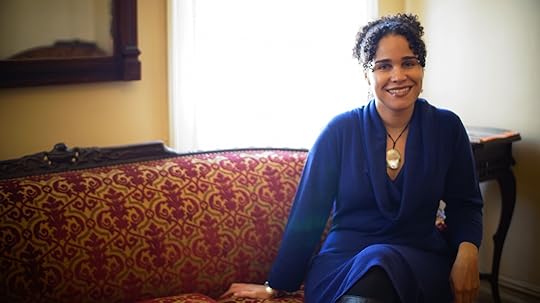
8.

9.

10.
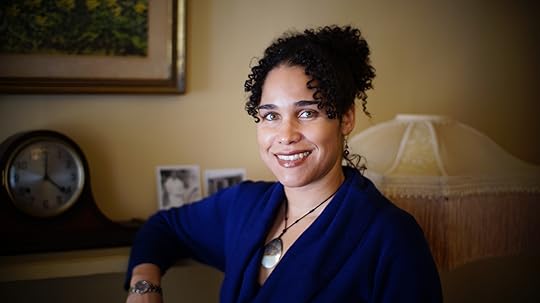
11.

12.

13.

14.

15.

16.

17.

18.

19.

20.
March 12, 2015
frame/work
 I’m setting up a reading schedule so I can finally get through this book, Brooklyn’s Promised Land. Nonfiction can be challenging and historians aren’t known for being outstanding storytellers, but the latest book on Weeksville is comprehensive and necessary reading for my residency. I figure I should try to read nonfiction for at least one hour every day, and I’ll read on the train up to Harlem if I find it too hard to focus here at home. Today I’ve been thinking about the picture book I’ve been commissioned to write. I think I’m going to write three—one for each of the historic houses at the Weeksville Heritage Center. Each house represents a different era—1860s, 1900s, 1930s—and I can incorporate historical figures who might have lived in the community during those times. I know I want to write a ghost story and send a contemporary kid back in time…not sure about Book #3. I’m sure looking at the archival material will give me all kinds of ideas. I could write a childhood biography of Susan McKinney Seward, daughter of a Weeksville landowner who became one of the first African American women
I’m setting up a reading schedule so I can finally get through this book, Brooklyn’s Promised Land. Nonfiction can be challenging and historians aren’t known for being outstanding storytellers, but the latest book on Weeksville is comprehensive and necessary reading for my residency. I figure I should try to read nonfiction for at least one hour every day, and I’ll read on the train up to Harlem if I find it too hard to focus here at home. Today I’ve been thinking about the picture book I’ve been commissioned to write. I think I’m going to write three—one for each of the historic houses at the Weeksville Heritage Center. Each house represents a different era—1860s, 1900s, 1930s—and I can incorporate historical figures who might have lived in the community during those times. I know I want to write a ghost story and send a contemporary kid back in time…not sure about Book #3. I’m sure looking at the archival material will give me all kinds of ideas. I could write a childhood biography of Susan McKinney Seward, daughter of a Weeksville landowner who became one of the first African American women  doctors in the US. For me, the hardest part of writing historical fiction is selecting only a handful of details out of hundreds. I only need one or two “true things” to serve as the foundation for a good story, but I have to comb through everything in order to find the facts that resonate most with me. Aside from The Magic Mirror, I haven’t really written historical fiction for young children (age 5-8). My Texan illustrator is back at work on Billie’s Blues, which touches on the Great Migration and lynching, but mostly I write historical fiction for teens. That way I can write honestly, without feeling pressure to sugarcoat the bitter truth. Judah’s Tale is a lot darker than A Wish After Midnight, which may surprise and/or disappoint readers. But I will be SO glad when I finally finish that book in May and never again have to hear, “When will the sequel be done?”
doctors in the US. For me, the hardest part of writing historical fiction is selecting only a handful of details out of hundreds. I only need one or two “true things” to serve as the foundation for a good story, but I have to comb through everything in order to find the facts that resonate most with me. Aside from The Magic Mirror, I haven’t really written historical fiction for young children (age 5-8). My Texan illustrator is back at work on Billie’s Blues, which touches on the Great Migration and lynching, but mostly I write historical fiction for teens. That way I can write honestly, without feeling pressure to sugarcoat the bitter truth. Judah’s Tale is a lot darker than A Wish After Midnight, which may surprise and/or disappoint readers. But I will be SO glad when I finally finish that book in May and never again have to hear, “When will the sequel be done?”
March 10, 2015
teachers touch hearts
 Maya Gonzalez always urges us to keep our hearts open, even/especially during difficult times. That was my first thought after reading this beautiful letter from a new teacher who shared Bird with a struggling student. I “met” this young woman a few years ago when I Skyped into a class taught by Dr. Rachelle Washington. This is how we build readers—step by small step:
Maya Gonzalez always urges us to keep our hearts open, even/especially during difficult times. That was my first thought after reading this beautiful letter from a new teacher who shared Bird with a struggling student. I “met” this young woman a few years ago when I Skyped into a class taught by Dr. Rachelle Washington. This is how we build readers—step by small step:
Dear Dr. Washington,I was in your Children’s Literature class about two years ago and have been doing my practicum and student teaching at *** Academy this year. I have wanted to email you about one of the students in my practicum 2nd grade class first semester named T. He was so below-level in reading, my teacher asked if I could work with him one-on-one during their reading time. He didn’t appear to have any motivation to read on his own and she couldn’t figure out what the problem was. When watching him choose a book, I noticed that he selected an option way above his reading level with an African American student on the cover, and it clicked that he wanted to read literature he could “see himself in”- your advice to us throughout your class. I told his teacher this could be one of the problems, and just got a “shoulder shrug” back. Those books were the only options they had.
The next day I brought in Zeta Elliot’s “Bird,” even though it was above his comprehension level. I knew that we could avoid frustration by reading it together- he would do the words he knew, and I could read the others. I can not tell you what a changed child I saw! I think the drawings got his attention the most, and we would draw a bird together and then look at the word describing the drawing. For instance, one of the birds was “perched.” We would draw the picture, write out the parts of the word, “p-er-ch-ed,” so that he could see he knew the parts. T was sounding out words I would never have guessed he could have- it was just finding a book that motivated him enough to show his teacher what all he could do! At the beginning of reading EVERY day, he would ask, “Miss, did you bring the bird book?” We also looked at Zeta Elliot’s picture and talked about how we Skyped her in class and that if he loved drawing and writing, he could grow to create something like her one day.
Finally the semester ended, and I left the book for T with all of the drawings and hard words broken apart. I wrote his name on the inside cover so he would know it was totally his- he was absent on my last day. He knew that if he worked hard to get through the challenging words, he was going to earn the book to have for himself. I still see the students from that class and give them hugs, but I have to tell you how it felt to see him in the hall just a few days ago, and hear him burst out, “Miss, my mentor at *** (after school care) and I have still been reading “Bird” together. I love it!” He was SO excited and enthusiastic!! It was by far one of the most rewarding experiences I have had student teaching and have realized how important your advice two years ago was.
Thank you Dr. Washington!












